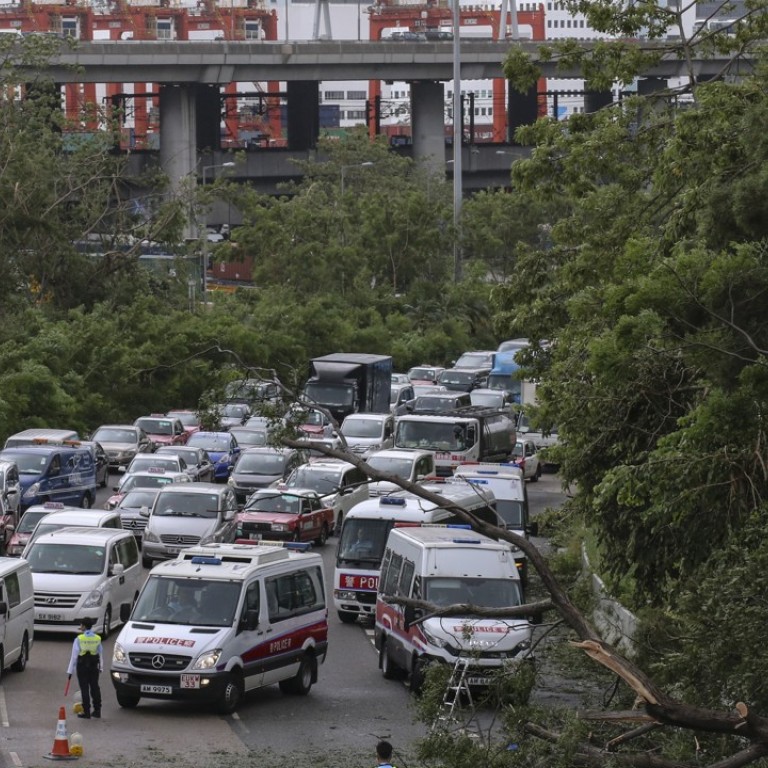
Typhoon Mangkhut traffic chaos could have been prevented by three simple measures
The government could have followed a simple three-point formula to avoid unnecessary chaos. First, it should have declared right away that no vehicles except buses, minibuses, taxis and emergency services would be allowed on the streets until most of them had been cleared.
Second, all the debris should have been pushed onto the pavement or one lane as soon as possible so that other lanes could have been available to the minimised traffic. Some roads could have temporarily been converted into one-ways. This was done in Shenzhen and helped the flow of traffic there.
Watch: Typhoon Mangkhut brings transport chaos to Hong Kong
Third, the government should have decreed that workers who were unable to reach their workplace on time could arrive later or even skip work that day. The employee could compensate for the lost hours by working on Saturday, Sunday or overtime, an arrangement that could be negotiated with the employer in good faith.
It’s time for the government to wake up and start doing its job.
Navis I. Kim, Sha Tin

